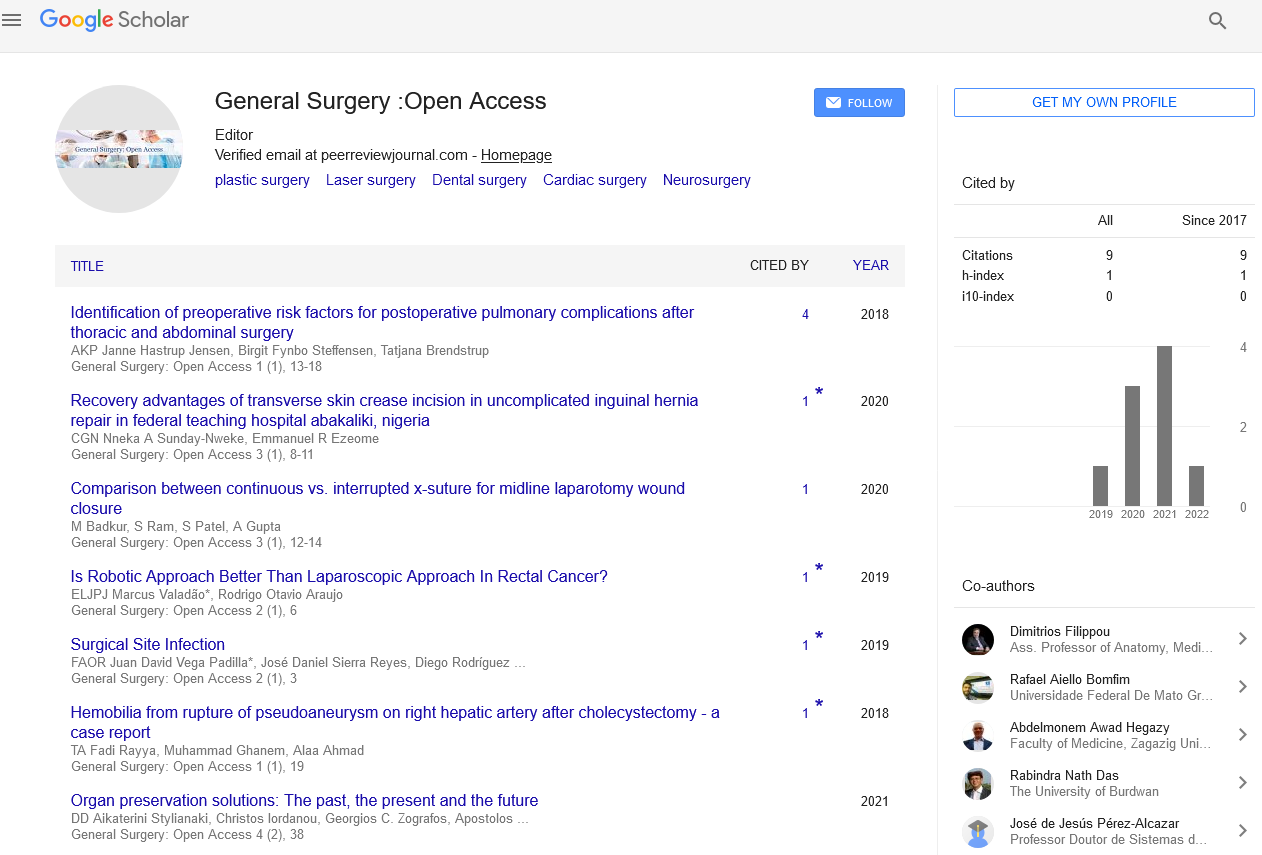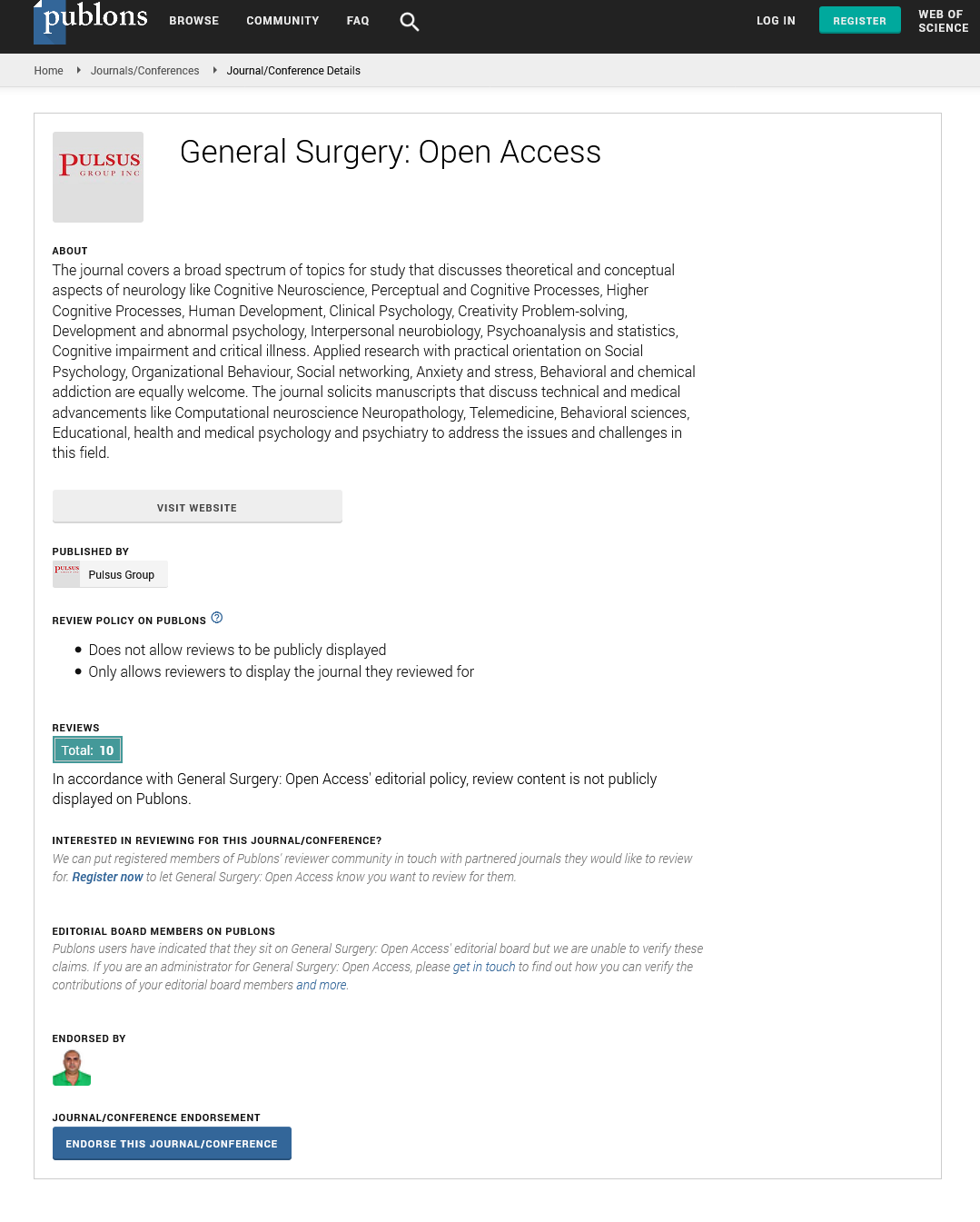Refractive surgery
Received: 06-Sep-2021 Accepted Date: Sep 20, 2021; Published: 27-Sep-2021
Citation: Maria P. Refractive surgery. Gen Surg: Open Access. 2021;4(5):18.
This open-access article is distributed under the terms of the Creative Commons Attribution Non-Commercial License (CC BY-NC) (http://creativecommons.org/licenses/by-nc/4.0/), which permits reuse, distribution and reproduction of the article, provided that the original work is properly cited and the reuse is restricted to noncommercial purposes. For commercial reuse, contact reprints@pulsus.com
Description
Refractive eye is a medical procedure used to work on the refractive condition of the eye and diminish or take out reliance on glasses or contact focal points. This can incorporate different techniques for careful rebuilding of the cornea, focal point implantation or focal point substitution. The most widely recognized techniques today use excimer lasers to reshape the arch of the cornea. Refractive eye medical procedures are utilized to treat normal vision problems like near-sightedness, hyperopia, presbyopia and astigmatism. Refractive ophthalmic medical procedure permits refractive mistakes to be rectified forever in a protected, viable, and dependable way with few entanglements. Two as of now settled careful techniques for the adjustment of refractive mistake are refractive corneal medical procedure and refractive focal point a medical procedure. Excimer laser strategies and incisional systems are utilized in refractive corneal medical procedure; Phakic Intraocular Focal Points (PIOL) and Refractive Focal Point (RFP) are utilized in focal point a medical procedure. An excimer ("energized dimer") laser is an argon fluoride laser working with a frequency of 193 nanometers. The cornea is renovated with laser removal so that light beams falling upon the eye consolidate unequivocally in the spot on the retina that has the most honed vision (macula). The surface treatment methods incorporate photorefractive keratectomy (PRK), Laser-Sub Epithelial keratomileusis (LASEK), and epi-LASIK. In these three sorts of methodology, corneal tissue is removed with an excimer laser just beneath the corneal epithelium, which is the peripheral of the five layers of the cornea. Prior to removal, the corneal epithelium is taken out by a mechanical or synthetic technique or with a laser (as in PRK), with a liquor arrangement or probably it is isolated from the basic tissue with a microkeratome (as in epi-LASIK). After removal, the corneal epithelium is set up back. The blend of a lamellating stromal corneal entry point with excimer-laser removal is known as laser in situ keratomileusis. In this procedure, a microkeratome or a femtosecond laser is utilized to cut a fold which is collapsed back to approach stromal tissue. In contrast to the surface treatment methods, laser removal is acted in a more profound layer of the cornea, i.e., the front stroma. After removal, the fold is returned to its unique position, where it adheres to the cornea with no further mediation due to cement powers and the siphoning impact of the endothelium and afterward turns out to be authoritatively fixed set up by tissue development inside a couple of hours.
The femtosecond laser is the most up to date innovation for making a corneal fold. It is exceptionally protected: the danger of a cutting mistake, as may happen with a mechanical microkeratome, is amazingly low. The 40 and 50 kHz lasers that were recently utilized have now been supplanted by 60-kHz lasers, which are as of now accessible available. This innovation additionally forestalls the event of deferred extreme touchiness disorder. The time required for visual restoration is generally a similar whether the corneal fold is made with femtosecond laser or with a microkeratome. Regardless of their benefits, femtosecond lasers are utilized in a couple of focuses as of now. The removal profile of an excimer laser neutralizes the circular and tube shaped parts of the refractive blunder. To address near sightedness, an excimer laser is utilized to eliminate a round lenticular from the focal point of the cornea. Removal to address hyperopia is acted in the corneal fringe, with the goal that the ebb and flow of the focal piece of the cornea is expanded and the refractive record of the cornea is made higher. Current aspheric (i.e. going amiss from round shape) and wave front-directed removal profiles are utilized to forestall the age of higher-request variations of the eye, or to lessen HOA that are now present and hence work on the patient's vision. To change the removal profile all the more unequivocally, "eye trackers" enrolling the situation of the iris are utilized to address for even, vertical, and rotatory eye developments. An eye tracker is a pursuit framework that guarantees the evacuation of corneal tissue at the intended location and prevents accidental decentering of the ablation zone.






